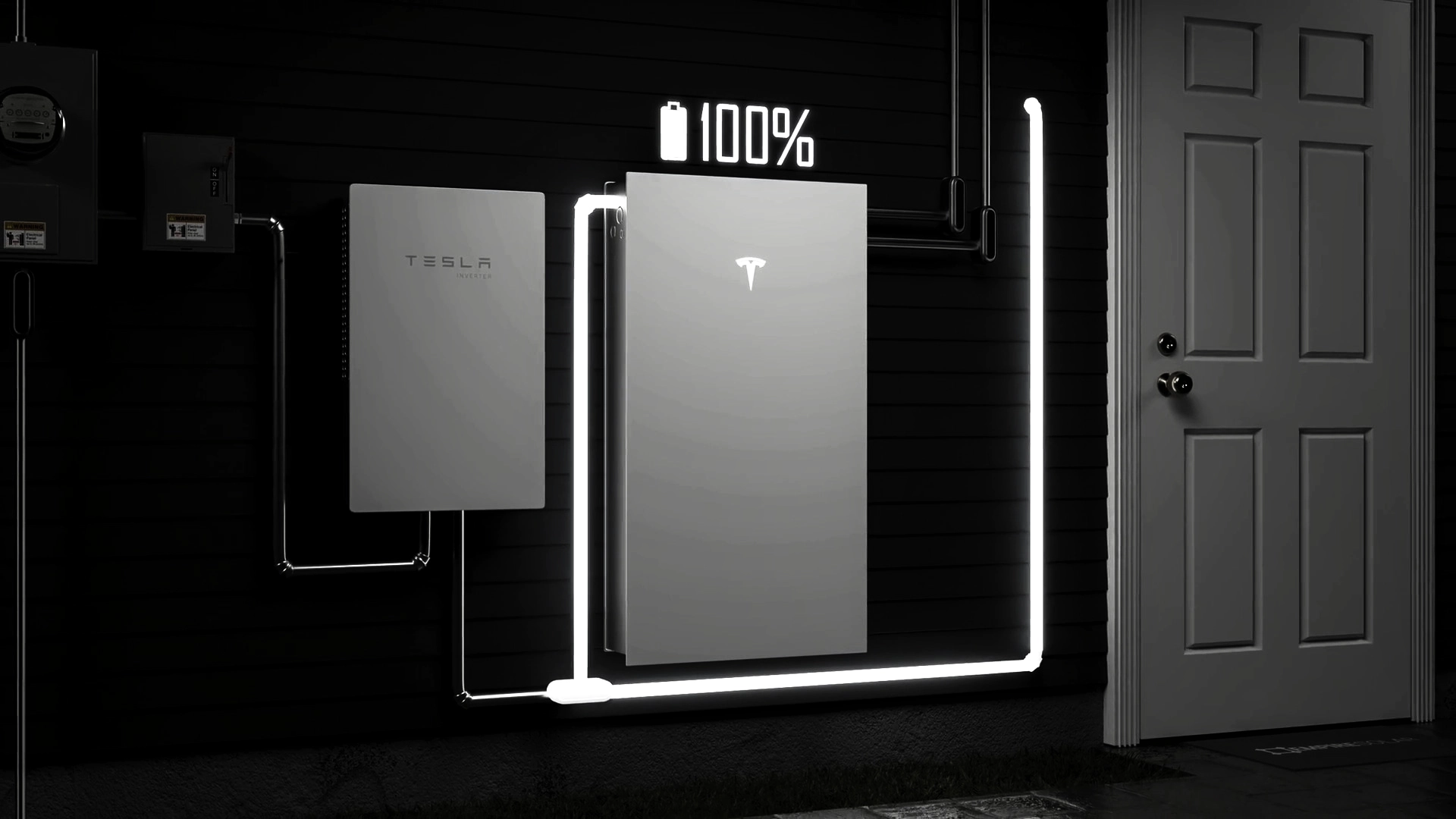Solar power continues to grow in popularity across New York, and for good reason. It’s one of the best ways to protect yourself from rising electricity rates, lower your utility bills, and boost your home’s value. As you drive through your neighborhood, most of the solar panels you’ll spot are roof-mounted. But every now and then, you might notice a set of solar panels installed in someone’s yard.
That’s called a ground-mounted solar system, and it can be a smart alternative depending on your property. In this guide, we’ll break down the key differences between roof solar panels and ground-mounted arrays, including cost, performance, and permitting, so you can decide which option makes the most sense for your home and your goals.
Ground Mount Pros
Ground-mounted systems are ideal for homeowners with limited roof space and plenty of open space in their yard. If you have more than 2 acres of property, it may be a good idea to explore potential locations for a ground mount, especially if you’re using over 10,000kWh per year.
Perfect Solar Access
The biggest advantage of installing a ground mount is that you can position your solar panels directly south to achieve optimal sun exposure. This allows your ground mount to receive direct sunlight from sunrise to sunset as long as there aren’t any nearby trees.
Even more importantly, ground mounts let you set the tilt angle of the panels for improved efficiency and performance from season to season. Since the sun’s angle changes throughout the year, it’s best to match your panel tilt to your location’s latitude. New York lies between 40-43 degrees latitude, so a tilt of 35-43 degrees is acceptable for a ground mounted array. This tilt also helps the panels quickly shed snow more easily during the winter months.
100% Energy Offset
With a ground solar panel system, you’re not limited by your roof size. You can build a system that will offset 100% or more of the energy you use year round. Whereas with a roof solar system, you are limited by the amount of usable roof space your house has.
When you can offset 100% of your electricity usage with solar, you may want to consider whether or not you plan on switching any major appliances (like your furnace or water heater) from gas to electric. When you have a guaranteed fixed cost on your electricity, it isn’t a bad idea to switch old gas powered appliances to electric ones. This way, solar allows you to save money on your gas or propane bills.
For New York homeowners with electric heating, ground solar panels are often the only way to install enough solar panels to completely offset the high energy demand of an all-electric home. These types of households typically use 3x more electricity (up to 30,000 kWh/year) than the average New York home. This means their monthly and long-term solar savings can be 2-3x higher, too.
No Roofing Concerns
When installing solar panels on your roof, it’s important to consider the condition of your roof and its remaining lifespan. While we make the reroofing process easier by offering a complimentary one-time panel removal and reinstallation if you choose us for your reroofing, many other installers charge extra for this service. This adds a significant cost if your roof needs to be replaced later.
With a ground-mounted system, you can skip those worries entirely. Because it’s installed separately from your home, your solar setup stays in place no matter what happens with your roof. There’s no need to coordinate schedules, no removal or reinstall fees, and no risk of delays or added costs. Your solar investment remains completely unaffected — and your roof stays accessible for any future work.
Ground Mount Cons
While ground-mounted solar can offer some clear advantages, it tends to complicate the installation process quite a bit. Unless your solar installer knows the ins and outs of installing ground mounts in your town/city, you may run into additional delays and setbacks between signing off on your project and your panel installation.
More Expensive
Ground-mounted installations typically cost 10-20% more than traditional roof-mounted systems for several reasons:
- They tend to require more paperwork and coordination with local building departments that sometimes require attendance of Architectural Review Board meetings held by your local building department or Homeowners Association.
- These projects take 2-3 days to install whereas a roof installation can be done in 1 day.
- Ground mounts are built of heavy-duty steel frames and a strong concrete foundation that increase both material and labor costs.
Stricter Guidelines
Every building department in New York tends to have their own unique requirements for ground mounted solar installations. Some towns won’t allow them to be visible from the road, significantly reducing the number of potential locations where they can be installed or even making some properties ineligible for permitting. Many solar installers tend to shy away from ground mounts for this very reason.
Another common requirement is that the array must be a certain distance from property lines and other structures on your property including sheds, pools, and the home itself. As a general rule of thumb we tend to require the property to be above 2 acres to ensure we can follow the local guidelines and codes set by each town’s unique rules for ground mounts.
Roof Mount Pros
We now know that ground-mounted systems offer flexibility and performance advantages in the right conditions. But, why are roof mounted installations so much more common?
Less Expensive
Cost and savings are the primary motivators behind New Yorkers switching to solar power. If your property qualifies for both roof and ground options, it’s worth comparing the cost difference. We recommend getting solar quotes for both. For the same size system, on average, roof-mounted systems cost 10–20% less due to simpler installation, fewer materials, and reduced labor.
Easier Permitting
Most homes are approved for rooftop solar with minimal red tape. Most towns and cities have very strict guidelines for ground mounts that greatly reduce anyone’s chances of installing solar in their yard. If you don’t have 2+ acres, lots of open space and a spot not visible from a main road, your town may reject a ground-mount application. For many homeowners, roof-mounted solar isn’t just more affordable — it’s the only real option.
More Practical
Roof solar panels are simpler in almost every step of the process when getting solar installed. It’s much easier to install on an existing structure than building out an entire racking system that’s supported by galvanized steel and concrete from the ground up. Not only that, but roof systems usually require less permitting, less labor, and fewer materials, which helps keep costs down and timelines shorter. For homeowners who want a smooth, efficient installation without major site work or landscape disruption, roof-mounted solar is often the most practical option.
Roof Mount Cons
Roof Space Limitations
Most homes weren’t built with solar in mind. Not every house has a perfect south-facing roof. Vents, chimneys, dormers, and other obstructions limit how many panels can fit. Most roof solar arrays offset only 30-70% of their annual usage. They are still saving considerably, but if you have the space for a ground mount and can choose between offsetting 70% or 100% of your bill, most homeowners would choose 100%.
Reroofing Costs
Reroofing after solar installation can be costly especially if your installer charges for panel removal and reinstallation. At Empire Solar, we make it easier by giving customers the option to have us handle their roofing as well. If you choose us for your reroofing project, we’ll remove and reinstall your solar panels at no extra cost.
Still, even if there is no cost involved, you only need to install a ground solar system once. When it comes time to redo your roof, you don’t need to worry about coordinating with your solar installer and your roofer to get the panels removed during your roof replacement and then reinstalled after the new roof is complete.
Aesthetics
Although modern solar panels are sleek, low-profile and blend into roofs more easily, some homeowners still worry about visibility from the street. If curb appeal is a concern, a ground-mounted system can be placed in a more discreet part of your property.
Still Not Sure? We Can Help.
If you still have some questions about whether you should install a roof or a ground-mounted system, it might be time to get a personalized quote for both options and review them with an experienced energy specialist.
At Empire Solar, we’ll:
- Analyze your property’s suitability
- Review your energy usage and savings potential
- Help you weigh the pros and cons side-by-side
- Calculate how much each option could save you over time
Schedule a free solar consultation to see what solar would look like on your roof or in your yard.


